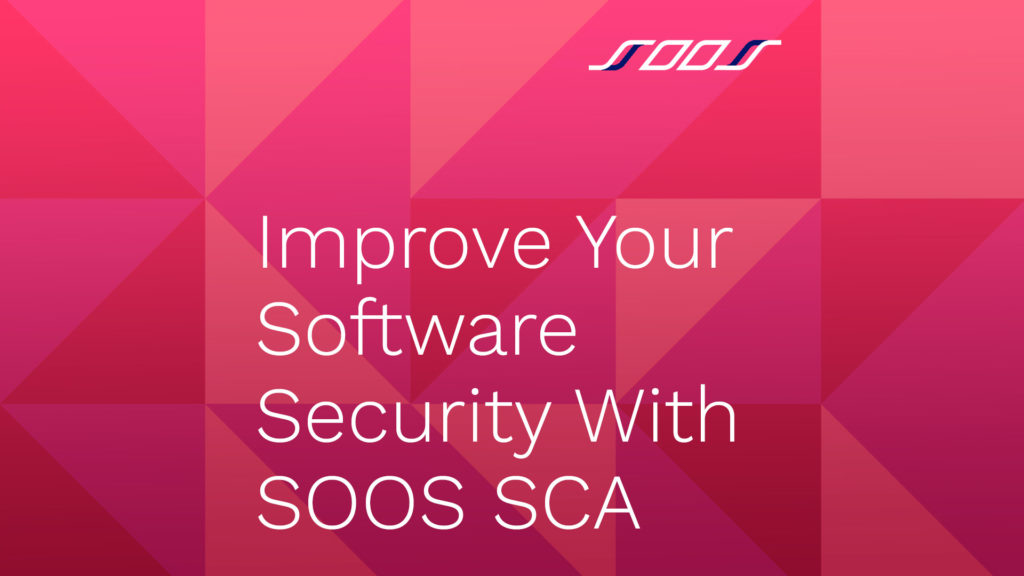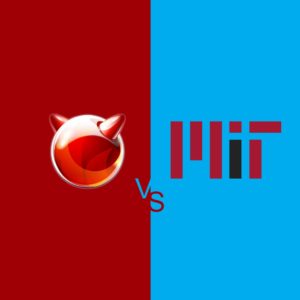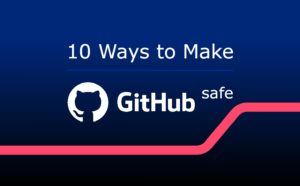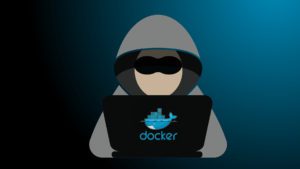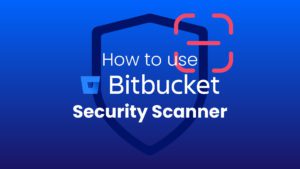Today, almost every business and organization relies on various software packages for most business functions. Your company’s finances and data, along with that of your vendors and clients, reside on your servers, and you are responsible for taking precautions to keep that data safe. Although some of your software may be proprietary, the chances are that your company uses open-source software as well. Improve your software security with SOOS SCA.
A security breach refers to unauthorized access to your computer network. Security breaches can be very costly to companies; according to Embroker, the average cost of a data breach is over $4 million globally. In addition to financial ramifications, the reputation of companies that experience major data breaches can also suffer.
There is a difference between a security breach and a data breach. If an intruder gets into your system, but no data is compromised, it is a security breach. A data breach is when that intruder does steal data. At times, perpetrators may steal your data and alter confidential data or block your access to it.
Companies routinely use safety precautions such as requiring clearance into restricted spaces, having security personnel screening people entering the premises, and installing surveillance cameras to monitor everything that goes on. These are all applaudable safety measures, but cybersecurity is just as critical.
Not only can a security breach result in lost personal data and information, but it can also lead to losing confidential business information such as trade secrets or other intellectual property. Software security isn’t an option; it’s a necessity.
How To Avoid a Software Security Breach
There are several types of security breaches you need to be aware of so you can protect your systems. Hackers and malware attacks may find a way into your network, but they are often only able to do so because of an unaddressed vulnerability in your system.
Unfortunately, not every open-source software developer is diligent about providing security updates. They may know about security vulnerabilities but not send out patches and fixes. As their customer, you won’t be aware of these vulnerabilities without using a software composition analysis tool. Unaddressed security vulnerabilities often provide intruders with an easy way into your system.
In addition, it’s vital that you routinely install available updates. Malware events happen more frequently than you might think. Although not all are successful, many malware variations may constantly bombard your network.
Human error is responsible for about half of security breaches. However, that’s not to say that your employees intentionally do things to invite these breaches. There are several ways that human error can cause security breaches, including sharing passwords with others, using weak passwords, clicking on unsecured links, or otherwise interacting with phishing scam emails.
Unfortunately, your employees can also take advantage of their system access to steal information from your company. They might copy data onto a flash drive, for instance, and carry that data with them when they leave your premises. They may also provide an open door for hackers.
To minimize some of these risks, your employees must know how to contribute to your overall network security.
Provide Training for the Security Best Practices
Security training isn’t something to do during orientation and never be touched on again. Employees need to receive awareness updates regularly, and coders need routine software development security training to be effective.
- Make it clear that every employee is expected to follow your guidelines.
- Require all computer users to utilize strong passwords and prohibit them from writing them down and leaving that password on their desks.
- Include information to help employees identify and avoid phishing attacks.
Use Clear Procedures for Database Calls
Database calls to access your databases and lax security or not following pre-set procedures can allow openings for others to access your data. Be sure that everyone involved in database calls is regularly updated about proper procedures to use.
Using stored procedures secures your database from structured query language being injected into your database. These SQL attacks can allow criminals to manipulate your database to access sensitive information.
Designate a Project Security Officer
Avoid the “I thought someone else had already taken care of that” response by designating one person to oversee the security of every project. Many companies rely on a software security engineer to be responsible for software-related security needs. These professionals use their training, knowledge, and expertise to expose potential threats and deal with them.
Some of their responsibilities are:
- Creating ways of solving software security issues
- Developing security procedures and expectations for your employees
- Scanning systems regularly to find potential vulnerabilities
- Performing regular system updates
- Monitoring your network for unusual system behaviors, intrusions, and breaches
- Determining the cause of any breaches and taking steps to prevent the same type of breach from happening again
- Reporting to upper management and recommending improvements to overall system security
- Instructing your employees on security procedures they are required to follow
Your software security engineer may also periodically initiate a software security audit to look for system-wide vulnerabilities.
Scan Your Software With an SCA Tool
Your network probably contains many different open-source software programs, and everyone is susceptible to vulnerabilities. A software composition analysis tool automates scanning every piece of software you use.
Benefits of Using the SOOS Software Composition Analysis Tool
SOOS is proud to offer the only SCA tool that you’ll need. It is packed with powerful features that identify different kinds of system vulnerabilities. Your developers, security and legal analysts, as well as your overall system structure’s security, will all benefit from the abilities of the SOOS software composition analysis tool.
You can control many components by establishing parameters using SOOS’s customizable governance function. Detailed vulnerability reports tell you the types of vulnerabilities found in a scan, the severity of those vulnerabilities, and how many projects are affected by them.
Another report keeps track of any licensing exposures that could create unintended legal issues for your company.
SOOS offers integration with GitHub, connects to issue trackers, and provides a feature-rich vulnerability dashboard, along with keeping track of vulnerability history.
SOOS SCA Tool Features
The SOOS SCA tool performs multiple functions to safeguard your software security. SOOS SCA is a tool that will check your software for vulnerabilities and open-source licenses. It also provides the feature to audit the configuration of your web servers and operating systems. Other features, including security documentation, vulnerability management, and access control, are available to you.
Find Open-Source Software Security Vulnerabilities
During the initial scan of your system, the SOOS SCA may find many security vulnerabilities. After these vulnerabilities are addressed, regular scans continuously look for new threats.
With every additional software package you add to your system and every update of that software, your system may become vulnerable. Possible vulnerabilities include:
- Dependencies
- Newly discovered security threats
- Security misconfigurations
- Sensitive data exposure
- Bugs or malware
- Injection attacks
- Broken user restrictions
- Missing or broken authentication processes
One way SOOS protects its users is to pull updated vulnerability data every 12 hours from the National Vulnerability Database. Then, SOOS uses that information to look through your application projects, like GitHub, and open-source software that uses these application components every 12 hours to verify that newly identified vulnerabilities aren’t present in your system.
Research Software Security
SOOS understands that cyberattacks will continue to be a problem. The cybercriminals behind them are constantly adapting their strategies to get around even the most robust security measures. SOOS is always doing software security research to outthink hackers and find ways to keep them out of your systems.
Prioritize
While some security vulnerabilities are minor, others can have dramatic consequences if they aren’t addressed immediately. The SOOS SCA tool assigns a severity risk to every vulnerability found to make your software security personnel aware of what should be dealt with first.
You can even give the software permission to stop projects as soon as a vulnerability is identified.
Push Fixes
The SOOS SCA tool can fix some vulnerabilities on its own, and it can also suggest fixes for you to implement.
Monitor Software Security Vulnerabilities in Real-Time
New open-source software vulnerabilities can affect your network and systems quickly. That’s why SOOS monitors your network for software security vulnerabilities in real-time. Your software security team is immediately notified of these vulnerabilities to help prevent the vulnerabilities from spreading.
The Open-Source Evolution
Before the early 1980s, most of the software produced was shared freely. When computer usage became more common, software developers became more tight-fisted. In 1983, the software scene began to shift.
Companies began to release close-sourced software, requiring users to pay for using it. Operating systems were reclassified as commercial products, requiring users to pay significant fees to obtain the license to use them.
Many people viewed these changes as a few companies creating a monopoly that significantly restricted those wanting to use computers. Richard Stallman was one of those people, and in 1983, he announced that he would develop a new operating system that would be distributed freely.
When the first part of his GNU suite was released in 1985, the copyright attached stated that users could make copies, make modified copies, and then redistribute them as long as credit was given to GNU. This encouraged others to use his software as part of their source code.
The first generation of open-source software had widespread contributors and wasn’t user-friendly, but it encouraged new ways of thinking about software and licensing.
The term “open-source” was first used in 1998. The second generation had a couple of noticeable changes. This software was primarily developed by one company and licensed so that only part of the project was free to users. This created difficulties because contributors began to compete against each other. In addition, this generation’s software didn’t accommodate cloud usage.
The third generation addressed the shortcomings of the previous ones. Usually, over 90% of the coding in software releases is written within the company that commercializes it. In addition, these companies offer their software in SaaS cloud-based systems.
Open-Source Software Security Flaws
As great as open-source software can be, using it does, unfortunately, present some security flaws. The SOOS SCA tool is designed to find and help you fix flaws such as:
- Conflicting licenses or version compatibility issues can bog down your system and open your company to legal or productivity problems.
- You don’t know who contributed to developing the software or their security protocols, so you may unknowingly use vulnerable software.
- Because known vulnerabilities become public knowledge, you may leave your company open to cybercriminals if you don’t update your software regularly.
- Some open-source software isn’t warrantied.
- Developers don’t necessarily provide security fixes or patches to users.
- There are no quality control standards that apply to open-source software, so there is always the possibility that the software you choose won’t perform as well as you need it to.
Conclusion
The concept for SOOS was born out of frustration. The founder was looking for an effective, straightforward solution to open-source software licensing and compliance issues. He found only confusion with available products. That confusion and frustration motivated him to build something that provided everything he needed but nothing he didn’t.
Because of his desire for his SCA tool to be accessible to anyone who wanted to use it, he decided not to use other providers’ pricing tactics. Many competitors charge for every user seat and the number of scans you run. The charges for these can be outrageous and prevent smaller companies from being able to use them at all.
Fortunately, SOOS makes it easy for you to obtain reliable and cost-effective software security for your company. SOOS even offers a free trial that you can cancel at any time. There’s no need to look anywhere else; give SOOS a try today.
Sources:
- Cost of a Data Breach
- SOOS Pricing
- Top 10 Software Security Best Practices
- Security Engineer Careers
- How Open-Source Software Took Over the World
- Common Software Vulnerabilities in 2022 and Ways to Prevent Them
- Learn How to Improve Security in Software Development
- Top 3 Open Source Risks and How to Beat Them
- 20 Years of Open Source: The Evolution and Future of Free and Shareable Software
- A Brief History of Free and Open Source Software Licensing

